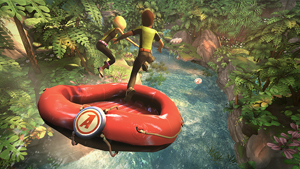Breakthrough in Nanocrystals Growth
Argonne, ILL — For the first time scientists have been able to watch nanoparticles grow from the earliest stages of their formation. Nanoparticles are the foundation of nanotechnology and their performance depends on their structure, composition, and size. Researchers will now be able to develop ways to control conditions under which they are grown. The breakthrough will affect a wide range of applications including solar-cell technology and chemical and biological sensors. The research is published in NANOLetters.
As coauthor Wenge Yang of the Carnegie Institution’s Geophysical Laboratory explained: “It’s been very difficult to watch these tiny particles be born and grow in the past because traditional techniques require that the sample be in a vacuum and many nanoparticles are grown in a metal-conducting liquid. So we have not been able to see how different conditions affect the particles, much less understand how we can tweak the conditions to get a desired effect.” (more…)



